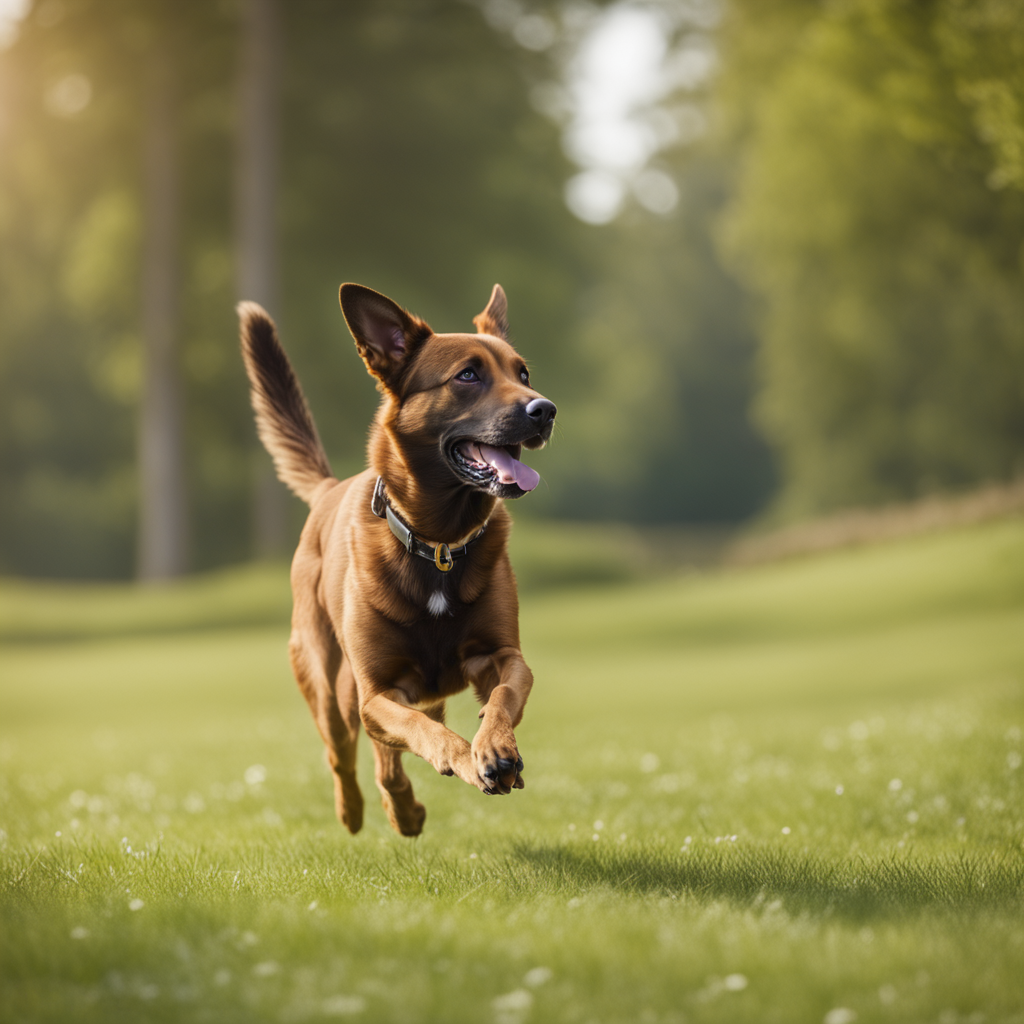Breaking Bad Habits: Behavior Dog Training Techniques

Behavior Dog Training Techniques: Breaking bad habits in dogs is essential for a well-behaved and happy pet. With the right behavior dog training techniques, any dog can learn to overcome these habits and improve their overall behavior. This blog post will cover various methods and tips to help dog owners effectively train their furry friends, ensuring a positive and lasting change in their pets’ lives. Let’s dive into the world of behavior dog training and discover the best ways to help your canine companion break free from those pesky bad habits!
Understanding Dog Behaviors
Dogs are wonderful companions, but sometimes they can develop bad habits that can be frustrating for their owners. Understanding why dogs develop bad habits and what common bad habits they have is crucial for effective dog behavior training.
Common Bad Habits of Dogs
Dogs can develop a variety of bad habits, but some of the most common include barking excessively, chewing on furniture or other objects, digging holes in the yard, jumping on people, and begging for food. These habits can be both annoying and destructive, but with proper training, they can be corrected.
Why Dogs Develop Bad Habits
There are several reasons why dogs may develop bad habits. One of the most common is boredom. Dogs need plenty of exercise and mental stimulation, and if they don’t get enough, they may resort to destructive behaviors to entertain themselves. Another reason is anxiety. Dogs can develop separation anxiety or other forms of anxiety that cause them to engage in destructive behaviors. Finally, dogs may develop bad habits because they simply haven’t been trained properly.
To prevent bad habits from developing in the first place, it’s important to provide your dog with plenty of exercise and mental stimulation. This can include daily walks, trips to the dog park, and playing with toys that challenge their minds. If you notice your dog engaging in bad habits, it’s important to address the behavior immediately.
Positive Reinforcement Training
As a dog owner, you want your furry friend to be well-behaved and obedient. Positive reinforcement training is a technique that can help you achieve just that.
What is Positive Reinforcement Training?
Positive reinforcement is a training method that involves rewarding good behavior. This technique is based on the idea that dogs will repeat behaviors that are rewarded, while behaviors that are not rewarded will eventually stop.
In positive reinforcement training, dogs are rewarded with treats, praise, and affection when they exhibit desirable behaviors such as sitting, lying down, or staying. This technique helps dogs learn what is expected of them and encourages them to repeat good behaviors in the future.
Examples of Positive Reinforcement Training Techniques
There are several positive reinforcement techniques that you can use to train your dog. Here are some examples:
- Clicker Training: This technique involves using a clicker to mark desired behaviors, followed by a treat or other reward. The sound of the clicker helps the dog understand which behavior is being rewarded.
- Target Training: This technique involves teaching your dog to touch a specific object with its nose or paw, followed by a reward. Once your dog has mastered the target behavior, you can use it to teach other behaviors.
- Shaping: This technique involves rewarding your dog for behaviors that are close to the desired behavior, gradually shaping them towards the desired behavior. For example, if you want your dog to roll over, you may first reward them for lying on their side, then for turning their head, and finally for rolling over.
- Chaining: This technique involves combining several behaviors into a sequence and rewarding your dog for completing the entire sequence. For example, if you want your dog to fetch a ball and bring it back to you, you may first reward them for picking up the ball, then for bringing it closer to you, and finally for dropping it in your hand.
Positive reinforcement is an effective and humane way to train your dog. By rewarding good behavior, you can encourage your dog to repeat desirable behaviors and build a strong bond with your furry friend.
Negative Reinforcement Training
Negative reinforcement training is a type of behavior modification that aims to decrease the frequency of undesired behavior by removing or avoiding a negative stimulus. This type of training works by reinforcing the desired behavior by removing the unpleasant stimulus as soon as the dog performs the desired action.
Examples of Negative Reinforcement Training Techniques
One common example of negative reinforcement training is the use of a choke chain. When the dog pulls on the leash, the chain tightens around the dog’s neck, causing discomfort and pain. This causes the dog to stop pulling and to walk calmly beside the owner. However, this technique should only be used by experienced trainers, as it can cause physical harm to the dog if used improperly.
Another example of negative reinforcement training is the use of an electric shock collar. When the dog performs an undesirable behavior, the collar emits a small electric shock. The shock stops as soon as the dog stops the behavior. However, this technique should only be used as a last resort by experienced trainers and should never be used to punish a dog for barking or growling.
Negative reinforcement training can be effective in some situations, but it should be used with caution and only by experienced trainers. It is important to remember that negative reinforcement training can cause physical and emotional harm to the dog if used improperly. It is always best to use positive reinforcement training techniques whenever possible, such as rewarding the dog with treats or praise when it performs a desired behavior.
——————————-
Get access to the best pet discounts, items, and training by clicking the link below
————————————-
Punishment-Free Training Techniques
Have you ever heard of punishment-free training? It’s a humane way of training dogs that doesn’t involve any physical or mental punishment. Instead, it focuses on rewarding good behavior and ignoring bad behavior. Punishment-free training techniques are becoming increasingly popular among dog owners, as they have been proven to be effective and long-lasting.
What is Punishment-Free Training?
Punishment-free training is all about positive reinforcement. It involves rewarding your dog for good behavior rather than punishing them for bad behavior. The idea is that by rewarding your dog, they will be more likely to repeat the good behavior in the future. Punishment-free training is based on the principles of operant conditioning, which is a type of learning that occurs through rewards and consequences.
When using punishment-free training, you should never use physical or mental punishment to correct your dog’s behavior. Instead, you should use positive reinforcement techniques such as treats, praise, and toys. These rewards will reinforce good behavior and encourage your dog to continue doing what they are doing.
Examples of Punishment-Free Training Techniques
Here are some examples of punishment-free training techniques that you can use to train your dog:
- Clicker Training: Clicker training is a type of training that involves using a clicker to mark good behavior. When your dog does something good, you click the clicker and give them a treat. This technique is effective because it helps to reinforce good behavior in your dog.
- Positive Reinforcement: Positive reinforcement involves rewarding your dog for good behavior. Whenever your dog does something good, you should give them a treat, praise them, or give them a toy. This will help to reinforce good behavior and encourage your dog to repeat it in the future.
- Ignore Bad Behavior: Ignoring bad behavior is another punishment-free training technique. If your dog is doing something bad, you should simply ignore them. Don’t give them any attention, and they will eventually stop the bad behavior.
By using punishment-free training techniques, you can train your dog humanely and effectively. Remember to always focus on rewarding good behavior and never use physical or mental punishment. With a little patience and consistency, your dog will learn to behave the way you want them to.
Consistency and Patience in Dog Training
When it comes to dog training, consistency, and patience are key. As a dog owner, it’s important to understand that training is a process that requires time, effort, and perseverance. In this article, we will discuss the importance of consistency and patience in dog training.
Importance of Consistency in Dog Training
Consistency is crucial when it comes to dog training. Dogs thrive on routine and structure, and it’s important to establish clear rules and expectations. By being consistent in your training, you are helping your dog understand what is expected of them, and what behaviors are acceptable.
When training your dog, consistency means using the same commands, tone of voice, and rewards every time. For example, if you are teaching your dog to sit, use the same command every time and reward them with praise or a treat. This consistency helps your dog understand what is expected of them and reinforces good behaviors.
It’s also important to be consistent in your training schedule. Dogs benefit from routine, and regular training sessions can help reinforce good behavior and prevent bad habits from forming. Choose a time and place for training sessions that work for both you and your dog, and stick to it.
Importance of Patience in Dog Training
Patience is another important aspect of dog training. Dogs learn at different rates, and some may take longer to pick up on certain behaviors than others. It’s important to be patient and not get frustrated if your dog doesn’t master a trick or behavior right away.
When training your dog, patience means taking the time to provide clear and consistent guidance and allowing your dog to learn at their own pace. Avoid punishing your dog for mistakes or bad behavior, as this can be counterproductive and lead to more problems down the line.
Remember that training is a process, and it takes time and patience to achieve the desired results. Be patient, stay positive, and enjoy the journey as you bond with your furry friend.
——————————-
Get access to the best pet discounts, items, and training by clicking the link below
————————————-
Conclusion
Breaking bad habits in dogs can be a challenging task, but with the right dog training techniques, it is possible. It is important to understand that training a dog is not a one-time event, but rather a continuous process that requires patience and consistency. Using positive reinforcement techniques, such as rewards and praise, can be effective in encouraging good behavior and discouraging bad habits.
It is also important for dog owners to understand the root cause of their dog’s bad habits so they can address them properly. With the right approach and a little bit of effort, any dog can learn to break bad habits and become a well-behaved companion. Remember to always be patient, consistent, and kind to your furry friend, and the results will follow.
Behavior Dog Training Techniques FAQ
Behavior dog training techniques can be confusing for many pet owners. Here are some answers to frequently asked questions:
What are some common bad habits in dogs that can be corrected through behavior training?
Some common bad habits in dogs include jumping on people, barking excessively, chewing on furniture, digging, and pulling on the leash during walks. Behavior dog training can help correct these and other bad habits.
How does behavior dog training work?
Behavior dog training involves teaching dogs to replace bad habits with good ones. This is achieved through positive reinforcement, which involves rewarding dogs for good behavior and ignoring bad behavior.
Do I need to hire a professional dog trainer for behavior training?
While it is possible to train your dog on your own, hiring a professional dog trainer can be beneficial. A professional trainer has experience working with dogs and can provide personalized guidance and support.
How long does it take for behavior dog training to be effective?
The amount of time it takes for behavior dog training to be effective varies depending on the dog and the bad habit being corrected. Consistency and patience are keys to success in behavior training.
Can behavior dog training work for older dogs?
Yes, behavior dog training can be effective for dogs of all ages. Older dogs may take longer to learn new habits, but it is never too late to start behavior training.
What should I do if behavior training doesn’t seem to be working?
If behavior training doesn’t seem to be working, it may be helpful to consult with a professional dog trainer. They can provide additional guidance and support to help you and your dog succeed.








